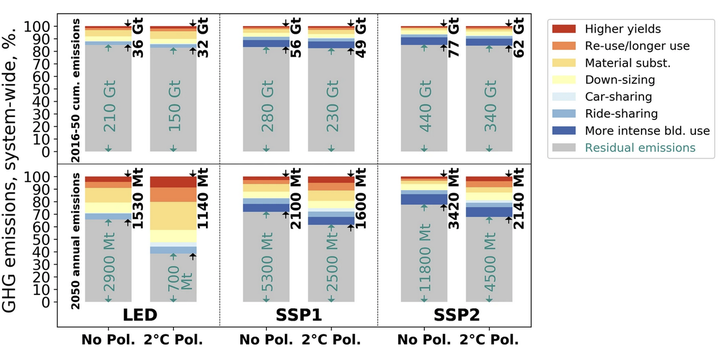Global Scenarios of Resource and Emissions Savings from Systemic Material Efficiency in Buildings and Cars

Abstract
Material production accounts for a quarter of global greenhouse gas (GHG) emissions. Resource-efficiency and circular-economy strategies, both industry and demand-focused, promise emission reductions through reducing material use, but detailed assessments of their GHG reduction potential are lacking. We present a global-scale analysis of material efficiency for passenger vehicles and residential buildings. We estimate future changes in material flows and energy use due to increased yields, light design, material substitution, extended service life, and increased service efficiency, reuse, and recycling. Together, these strategies can reduce cumulative global GHG emissions until 2050 by 20–52 Gt CO2-eq (residential buildings) and 13–26 Gt CO2e-eq (passenger vehicles), depending on policy assumptions. Next to energy efficiency and low-carbon energy supply, material efficiency is the third pillar of deep decarbonization for these sectors. For residential buildings, wood construction and reduced floorspace show the highest potential. For passenger vehicles, it is ride sharing and car sharing.